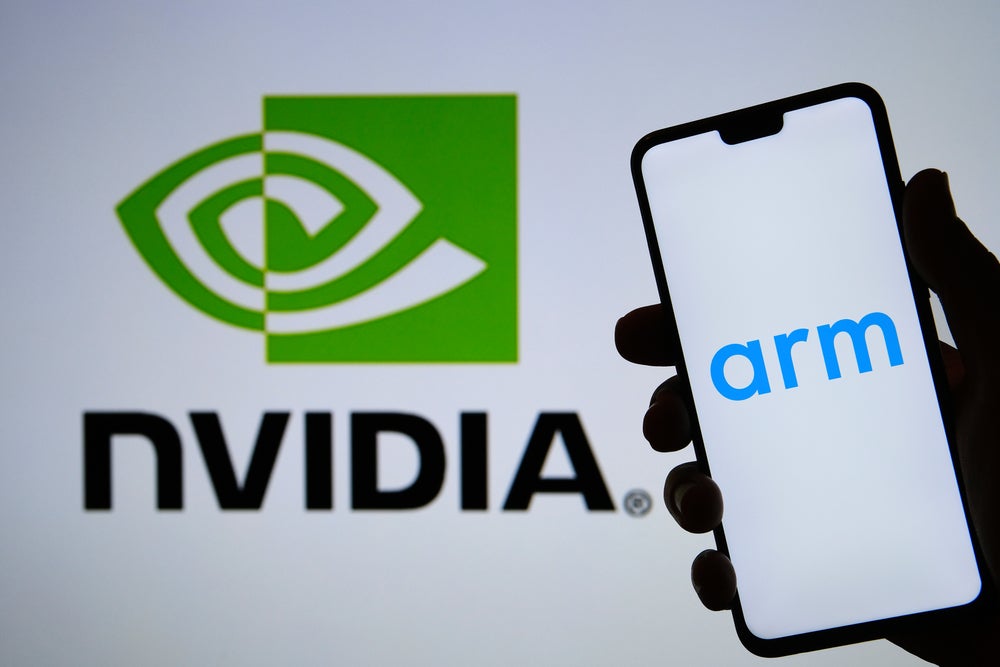
NVIDIA, a leader in the artificial intelligence (AI) chip space, is reportedly working on ARM personal computer (PC) chips – marking a major challenge for Intel and its long-time market dominance of PCs.
According to a recent Reuters report, which cites two people familiar with the matter, Nvidia has started to design central processing units (CPUs) that use technology from Arm Holdings and can run Microsoft’s Windows operating system.
Nvidia could be ready to release a PC chip based on Arm as soon as 2025, Reuters reported.
The news has been damaging to Intel’s shares, which saw a 3.1% decrease on Monday (23 October). Nvidia gained nearly 4% during the same day and Arm saw its stock rise almost 5%.
Qualcomm has been working on its own Arm-based PC chips since 2016, the first company targeted by Microsoft to spearhead the tech. However, the company has struggled with gaining significant sales.
Microsoft granted Qualcomm an exclusive arrangement to manufacture Windows-compatible chips until 2024, Reuters reported, according to two sources familiar with the matter.
How well do you really know your competitors?
Access the most comprehensive Company Profiles on the market, powered by GlobalData. Save hours of research. Gain competitive edge.

Thank you!
Your download email will arrive shortly
Not ready to buy yet? Download a free sample
We are confident about the unique quality of our Company Profiles. However, we want you to make the most beneficial decision for your business, so we offer a free sample that you can download by submitting the below form
By GlobalDataMicrosoft has been calling on other chip makers to enter the market with their own versions once the deal expires, the sources told the publication.
Advanced Micro Devices, the second most successful PC chip maker behind Intel, is also looking to create chips for PCs with Arm tech, Reuters reported.
Apple also switched its PC chips from Intel to Arm, leading to the company almost doubling its market share in three years – marking a far greater success with the transition than Qualcomm.
The company switched out its Intel processors in its Mac computers with designs based on Arm’s standards – and has credited the change to the product’s boosted sales.
Chips that use the Arm-based instruction set often use less power, which is integral to battery-powered devices.







